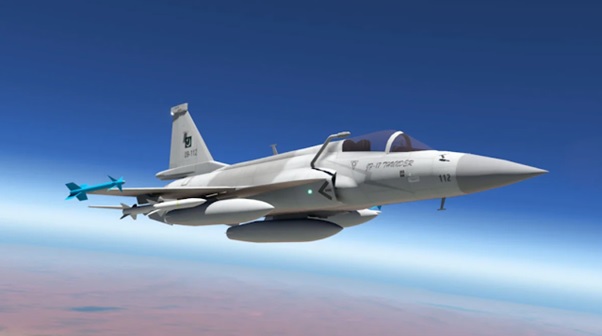
|
Pakistan PFX Concept Fighter - Photo Raksha Anirveda |
PFX to Advance Pakistan Air Force Modernization
By Riaz Haq
CA

Pakistan has unveiled its PFX (Pakistan Fighter Experimental) program as a significant upgrade to its JF-17 joint program with China. The new upgrade will feature several stealth features ranging from the use of radar-absorbing composite materials and diverterless supersonic inlets (DSI) to internal weapons bay (IWB) which will significantly reduce the aircraft's radar signature. It is targeted for completion by the end of this decade. In addition, the PFX's twin-engine design will improve maneuverability and allow greater payload capacity.
The program is part of Pakistan's broader strategy to reduce reliance on foreign suppliers and strengthen the domestic defense industry . Currently, 58% of JF-17 components are manufactured locally by PAC, but Pakistan aims to increase this share to achieve full production autonomy for the PFX. It is not just about the PAF modernization but also about positioning Pakistan as an important player in the global military aviation market .
The PFX is an evolution of a plan that Pakistan announced in 2017 to develop and produce 5th-generation fighter planes. It is part of Pakistan Air Force's highly ambitious Project Azm which includes building Kamra Aviation City dedicated to education, research and development, and manufacturing of advanced fighter jets, unmanned aerial vehicles (UAVs), and weapon systems.
The PAF has already started replacing its aging fleet with the induction of the Chinese J10C fighter jets which are considered 4.5 Gen. The J10-C has stealth features like diverterless supersonic inlets (DSI). Its BVR capability is supported by PL-15 missiles, with an engagement range of up to 200 kilometers, facilitating long-range target engagements.
The PAF has also begun the process of acquiring 5th-generation Chinese J35 fighter jets. The delivery of 40 J35 fighters to Pakistan is expected within two years, potentially altering regional dynamics, particularly concerning India.
(Riaz Haq is a Silicon Valley-based Pakistani-American analyst and writer. He blogs at www.riazhaq.com)

